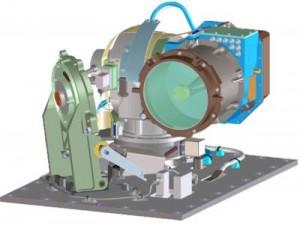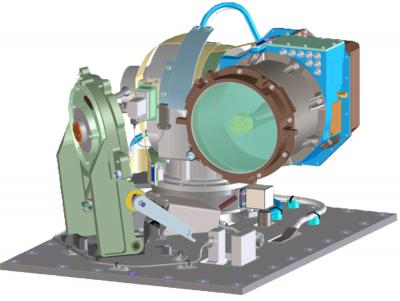
Future generations living and working on the moon, the Mars or even a distant asteroid may get to watch high-definition streaming movies, thanks to the efforts of a team of researchers from the Massachusetts Institute of Technology’s (MIT) Lincoln Laboratory who collaborated with the National Aeronautics and Space Mission (NASA), to demonstrate for the first time that a data communication technology exists that can provide space dwellers with broadband connectivity.
Since NASA first ventured into space, through the moon landings, shuttle programme, and unmanned exploration missions, radio frequency communication also known as RF, has been the mode of communications. But RF is reaching its limit just as demand for more data capacity continues to increase.
The MIT team made history last year when their Lunar Laser Communication Demonstration (LLCD) transmitted data over the 384,633 kilometers between the moon and Earth at a download rate of 622 megabits per second, faster than any radio frequency (RF) system. They also transmitted data from the Earth to the moon at 19.44 megabits per second, a factor of 4,800 times faster than the best RF uplink ever used. The development of laser communications will give NASA the ability to extend communication applications such as increased image resolution and even 3-D video transmission into deep space.
The team will present the details and the first comprehensive overview of the on-orbit performance of their record-shattering laser-based communication uplink between the moon and Earth at CLEO:2014, being held from 8-13 June in the US. This performance beat the team’s “previous record transmission speed last fall by a factor of 4,800”, according to a statement on Friday by The Optical Society, an association for optics and photonics.
LLCD’s main mission objective, according to NASA, is to transmit hundreds of millions of bits of data per second from the moon to Earth.
This is equivalent to transmitting more than 100 HD television channels simultaneously. LLCD’s receiving capability will also be tested as tens of millions of bits per second are sent from Earth to the spacecraft. These demonstrations will prove the technology for increased bandwidth for future missions is possible, according to NASA.
Researcher Mark Stevens of MIT Lincoln Laboratory pointed out in the press statement, that communicating at high data rates from Earth to the moon with laser beams “is challenging because of the 400,000-kilometer distance spreading out the light beam”, and because turbulence in the atmosphere can bend light, causing rapid fading or dropouts of the signal at the receiver.
To address the issue, the demonstration uses several techniques to achieve error-free performance over a wide range of optically challenging atmospheric conditions in both darkness and bright sunlight. A ground terminal at White Sands, New Mexico, uses four separate telescopes to send the uplink signal to the moon. Each telescope is about 6 inches in diameter and fed by a laser transmitter that sends information coded as pulses of invisible infrared light. The total transmitter power is the sum of the four separate transmitters, which results in 40 watts of power, according to the press statement.
The reason for the four telescopes is that each one transmits light through a different column of air that experiences different bending effects from the atmosphere, Stevens says. This increases the chance that at least one of the laser beams will interact with the receiver, which is mounted on a satellite orbiting the moon. This receiver uses a slightly narrower telescope to collect the light, which is then focused into an optical fiber similar to fibers used in terrestrial fiber optic networks.
From there, the signal in the fiber is amplified about 30,000 times. A photodetector converts the pulses of light into electrical pulses that are in turn converted into data bit patterns that carry the transmitted message. Of the 40-watt signals sent by the transmitter, less than a billionth of a watt is received at the satellite—-but that’s still about 10 times the signal necessary to achieve error-free communication, according to Stevens.
